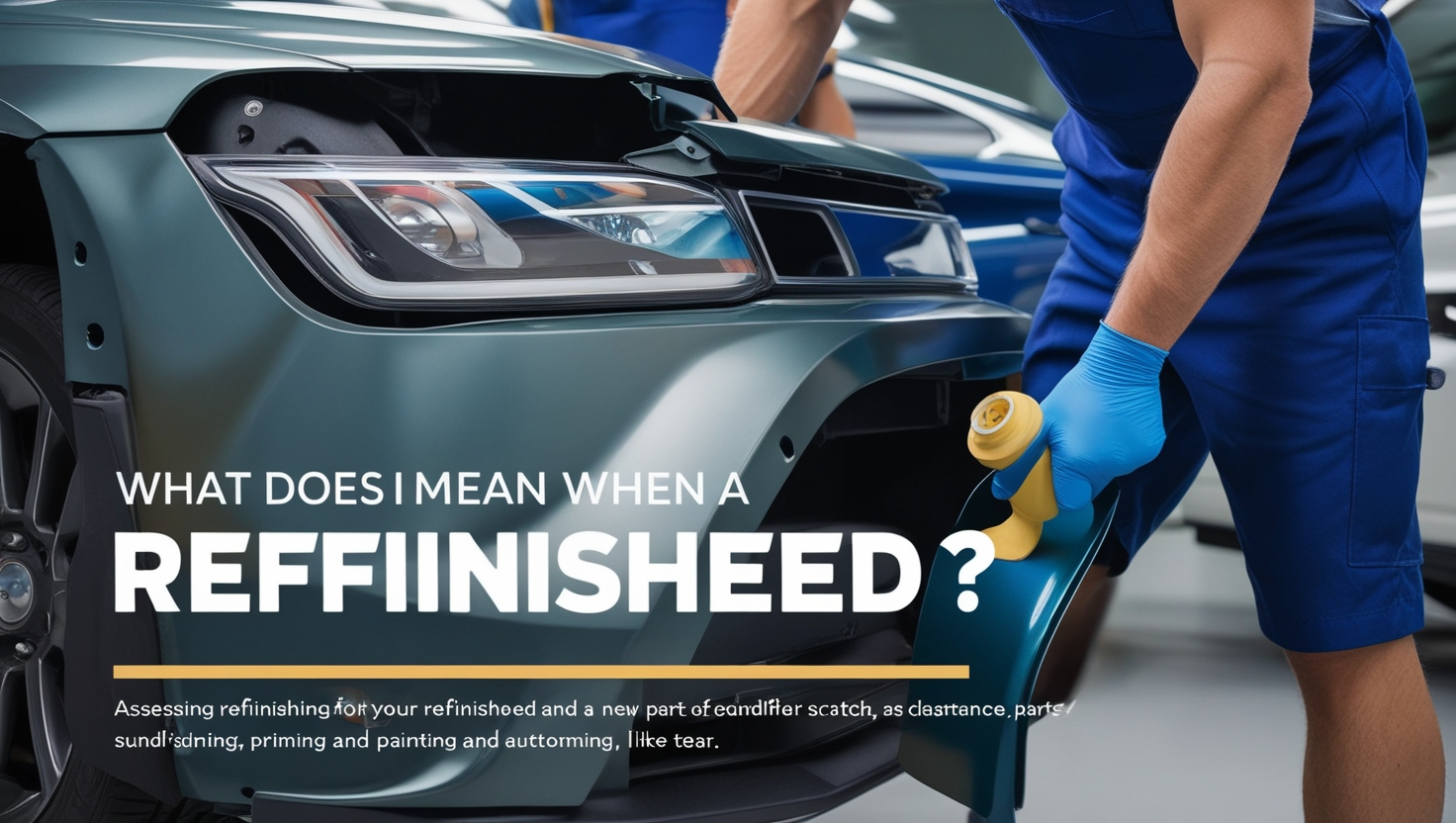Introduction
When you hear the term “refinished” in the context of car parts, it often raises questions about the process and its implications for vehicle maintenance and repair. “What Does It Mean When a Car Part Is Refinished” Refinishing involves restoring a car part to a condition that closely resembles its original state, both in functionality and appearance. This process can include sanding, repairing, priming, painting, and applying protective coatings. Understanding the nuances of refinishing can help you make informed decisions about your vehicle’s upkeep and the options available.
The Basics of Refinishing Car Parts
What does it mean when a car part is refinished? At its core, refinishing refers to repairing and restoring a car part to make it look and function like new. This is particularly common in parts like bumpers, fenders, doors, and other external components that are prone to damage from accidents, weather, or general wear and tear.
Refinishing is not the same as replacing. Instead of discarding a damaged part and buying a new one, refinishing involves restoring the existing component. This approach is often more cost-effective and environmentally friendly because it reduces waste and the demand for new materials.
The Refinishing Process in Detail
To fully understand what it means when a car part is refinished, it helps to explore the steps involved:
Assessment and Preparation
The first step is evaluating the damage to the part. Whether it’s a scratch, dent, or more significant damage, professionals determine the extent of work required.
Once assessed, the part is cleaned and prepped by removing any dirt, grease, or old paint layers.
Repair
If the part has dents or cracks, technicians repair these using specialized tools. Fillers may be applied to ensure a smooth surface.
Sanding
Sanding helps level the surface and remove any imperfections. This step is essential to guarantee proper adhesion of the primer and paint.
Priming
A primer is applied to create a smooth base and enhance the durability of the paint. The primer also helps protect the part from corrosion.
Painting
The car part is then painted to match the original color of the vehicle. Modern refinishing processes use computerized color-matching technology to ensure accuracy.
Finishing and Coating
Finally, a clear coat is applied to protect the paint and give the part a glossy finish. This step enhances the longevity and appearance of the refinished part.
Why Opt for Refinishing?
Now that we’ve explored the process, let’s delve into why someone might choose to refinish a car part. What does it mean when a car part is refinished in terms of benefits? Here are some key advantages:
Cost-Effectiveness
- Refinishing is typically more affordable than purchasing and installing a brand-new part.
Environmental Sustainability
- By restoring existing parts instead of discarding them, refinishing reduces waste and the environmental impact of manufacturing new components.
Maintaining Originality
- Refinishing allows you to retain the original parts of your vehicle, preserving its authenticity and value.
Aesthetic Appeal
- A refinished part can make your car look as good as new, boosting its overall appearance and resale value.
Commonly Refinished Car Parts
What does it mean when a car part is refinished in the context of specific components? Here are some examples:
- Bumpers: Frequently refinished due to scratches, dents, or cracks from minor collisions.
- Fenders and Doors: Often refinished after accidents or to address rust and wear.
- Wheels and Rims: Restored to fix curb damage or peeling finishes.
- Hoods and Trunks: Refinished to repair damage from hail, debris, or accidents.
Considerations Before Refinishing
While refinishing offers many benefits, it’s not always the best option. Here’s what to consider:
- Extent of Damage
- Some parts may be too damaged to restore effectively. In such cases, replacement may be the better choice.
- Cost vs. Replacement
- Compare the cost of refinishing with the price of a new part. Sometimes, the difference might justify opting for a replacement.
- Quality of Workmanship
- Ensure that the refinishing is done by skilled professionals using high-quality materials and equipment. Poor refinishing can lead to unsatisfactory results.
The Role of Technology in Refinishing
Modern refinishing processes have benefited greatly from advancements in technology. For example:
- Computerized Color Matching: Ensures that the refinished part seamlessly blends with the rest of the vehicle.
- Eco-Friendly Paints: Many refinishing shops now use water-based paints that are less harmful to the environment.
Conclusion
So, what does it mean when a car part is refinished? It signifies a meticulous process of restoring a vehicle component to its former glory, ensuring functionality and aesthetic appeal. Refinishing is a practical, cost-effective, and environmentally friendly alternative to replacing car parts. Whether it’s your bumper, fender, or wheels, refinishing can breathe new life into your vehicle while preserving its value. Next time you face damage to your car, consider refinishing as a viable option—it’s a choice that balances quality, sustainability, and cost.
